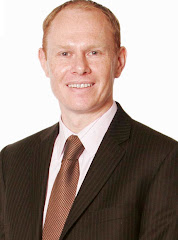Following my trip to Delhi I moved on to Bangalore for two days to complete my assessment of the first service provider and start my assessment of the second one. From Bangalore I then moved on to Chennai on the South West coast on Wednesday evening.
There are a couple of things from these visits that I thought worth sharing:
The power cuts I refered to in my previously blogs continued with nobody, including me, even blinking now when we temporarily lost light during meetings as the backup generators kicked in.
Physical Security is big business in these outsourcing centers. In all locations I have visited there is a thorough check at the entrance gate of the taxi I arrive in for bombs or similar material. This includes scanning the car, using mirrors to check underneath the body and opening every door and boot to examine the inside of the car. Incidentally this also happens at all the good hotels and while it feels unusual initially you become very accustomed to it.
Once inside the building you go through the usual sign in procedures, however they also take down the serial number of your laptop, ask you how many USB sticks you have and sometimes if you have any cameras. While on the face of it this security seems to make sense I am always surprised when I just walk straight out the door at the end of the day without any checks. This begs the question as to what the purpose of the entry check was as they have no idea if I have switched laptops or put data on the USB sticks!
Internally the buildings are divided into Offshore Delivery Centers (ODCs). Typically each ODC serves an individual client and in some cases an individual client project or programme if security requirements differ between projects. Physical access to the ODCs is determined by client requirements. The most stringent I have seen is the one where access to the ODC is based on a fingerprint scan, employees must leave their mobile phone with the security guard at the door to the ODC and once inside is unable to print anything, access the internet or send emails outside the client network. Secure indeed.
What we have seen in terms of retained client organisational models is also interesting. To date we have discussed at least 6 client retained organisational models and none are the same. The models have varied from 10:90 onshore/offshore ratios to 50:50, to clients having their own management staff in the offshore locations to ultra thin models where the client has a relatively thin vendor management organisation only. The choice of model is largely driven by the maturity of the relationship between the client and offshore provider, the complexity of the programmes being delivered and the client's risk appetite. Interestingly when we spoke to the client who had their own management staff co-located with the offshore provider they were convinced that the quality of the work delivered had improved significantly as a result.
The other thing that strikes you as you go from one provider to another is the number of well known organisations exploiting offshore IT services and the scale of the engagements which in some instances is in the 1000's. This is also reflected in the hotels which seem to survive largely on the presence of groups of business people visiting their offshore teams.
The final thing of note is the company cultures which were evident in each of the service providers we visited this week. Despite the obvious cultural difference we could clearly detect a difference in company culture between the two service providers we met. We will have to consider the consequence that these differences would have on service delivery.
It has been an interesting week with a huge amount of information absorbed and a detailed on the ground view of industry here emerging. I am currently back in Bangalore in preparation for a two day visit to the next service provider beginning Monday. I will blog again after that visit.
Blog by Simon Murphy on business technology

About Me
- Simon Murphy
- I am an experienced IT consultant working in Dublin, Ireland who specialises in Enterprise and IT Architect and helping clients solve their most pressing business problems. I have 16 years experience in the IT Industry and have worked in a variety of industry on very large scale IT projects. I am certified by the Open Group as a Master IT Architect and currently work for Deloitte Ireland where I lead our IT architecture group.